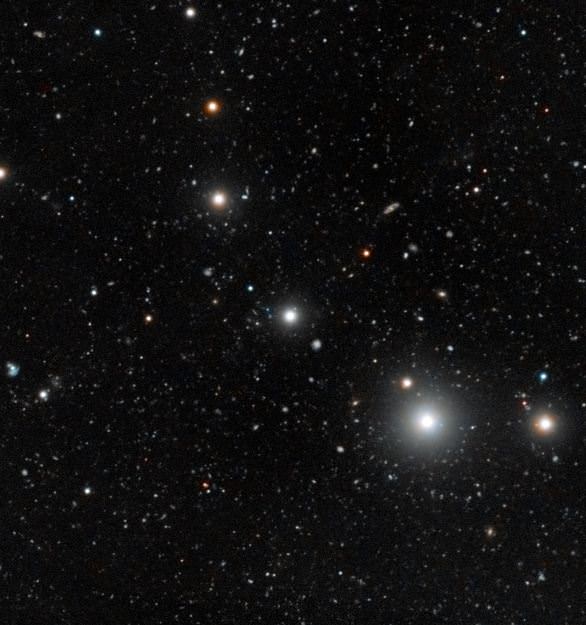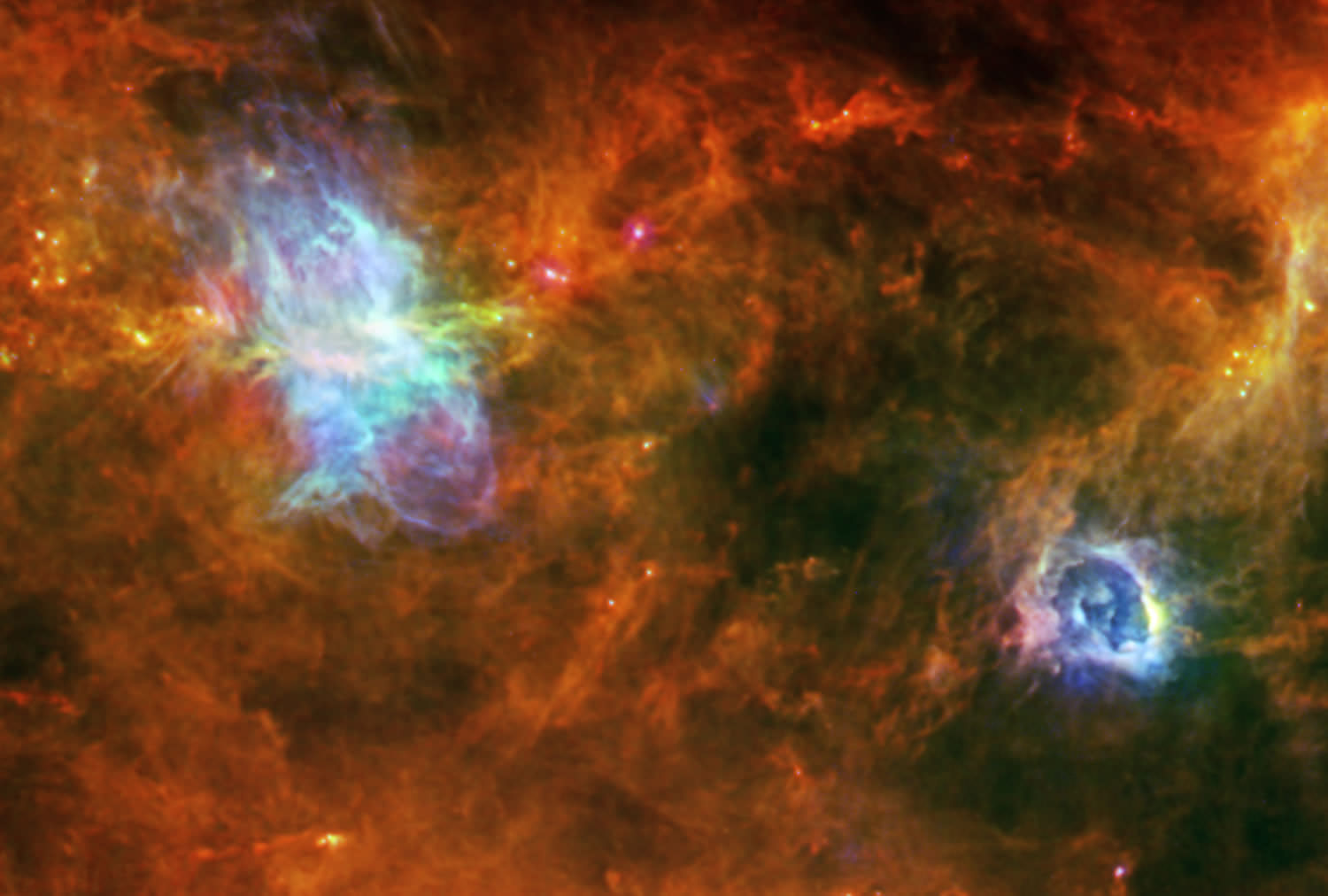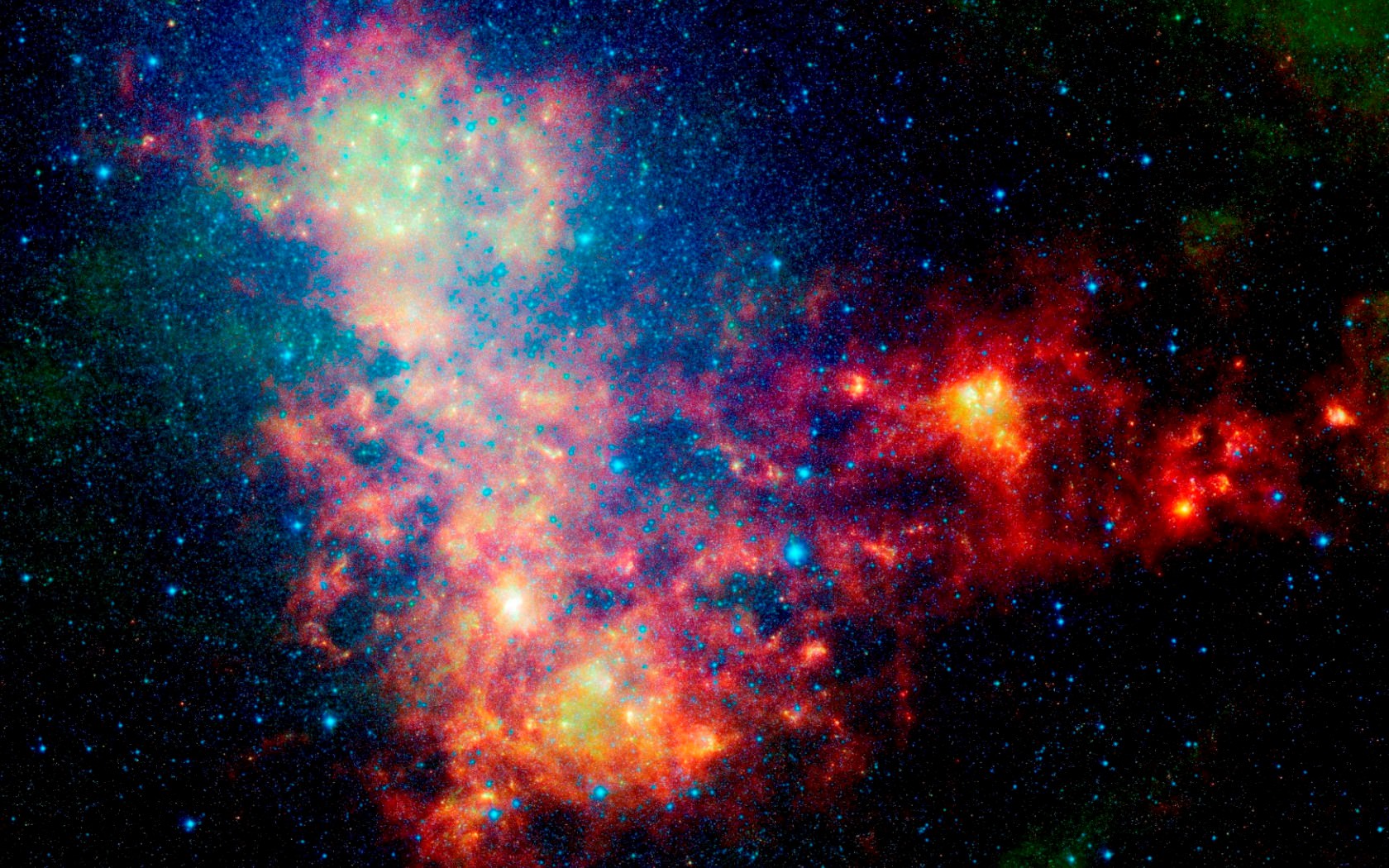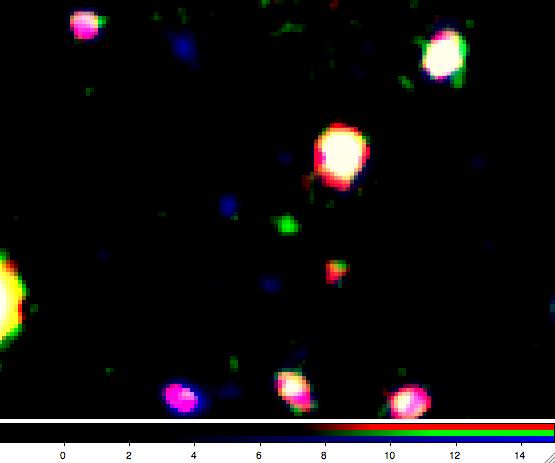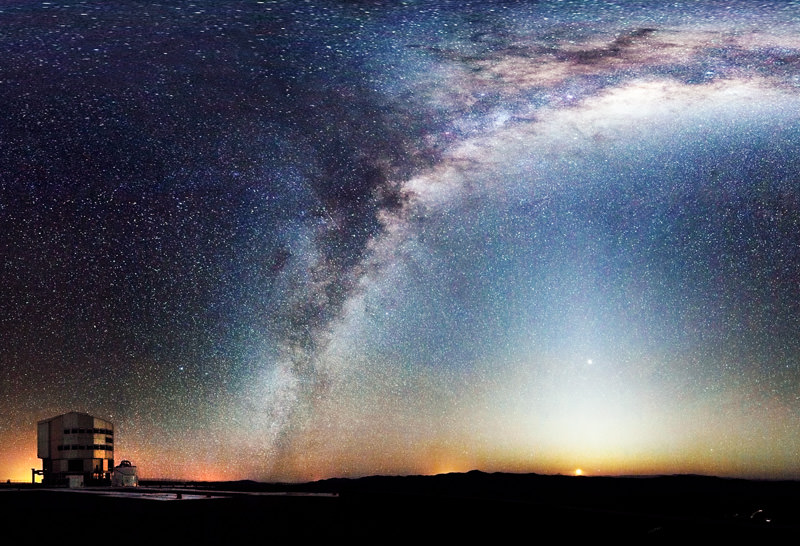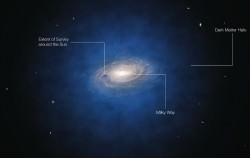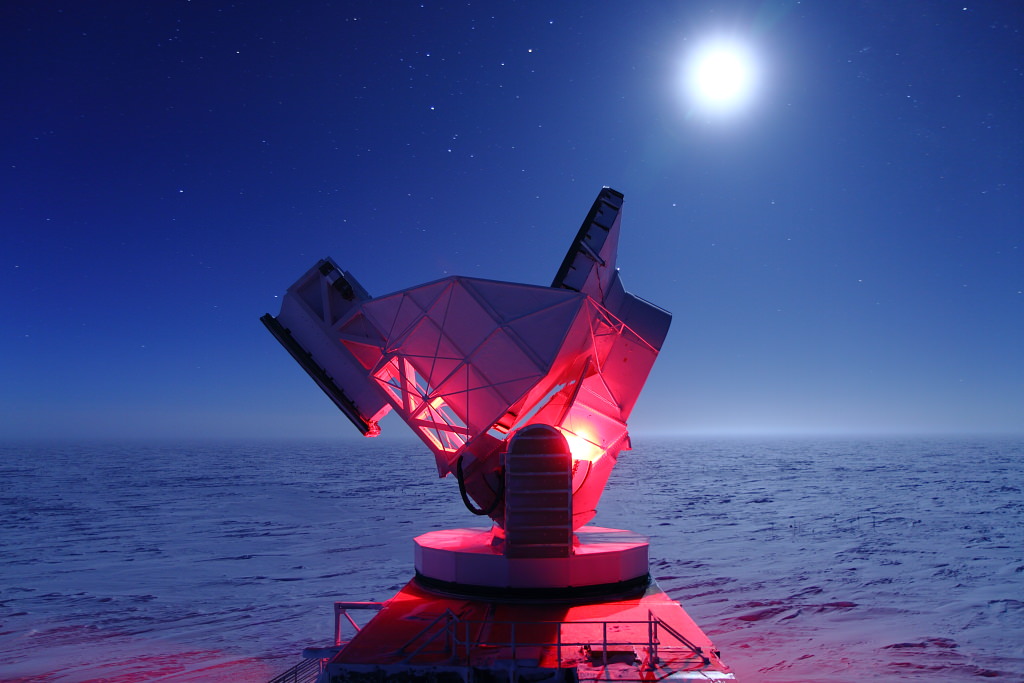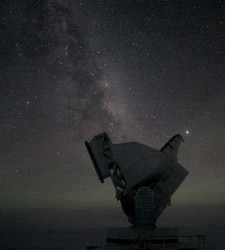Caption: This deep image shows the region of the sky around the quasar HE0109-3518, near the center of the image. The energetic radiation of the quasar makes dark galaxies glow, helping astronomers to understand the obscure early stages of galaxy formation. Credit:ESO, Digitized Sky Survey 2 and S. Cantalupo (UCSC)
How do you find a dark galaxy? Shine some light on the subject. Dark galaxies — ancient galaxies that contain little to no stars — have been theorized to exist but have not been observed, until now. An international team of astronomers think they have detected these elusive objects by observing them glowing as they are illuminated by a quasar.
Dark galaxies are small, gas-rich galaxies in the early Universe that are very inefficient at forming stars. They are predicted by theories of galaxy formation and are thought to be the building blocks of today’s bright, star-filled galaxies. Astronomers think that they may have fed large galaxies with much of the gas that later formed into the stars that exist today.
Being essentially devoid of stars, these dark galaxies don’t emit much light, making them very hard to detect. For years astronomers have been trying to develop new techniques that could confirm the existence of these galaxies. Small absorption dips in the spectra of background sources of light have hinted at their existence. However, this new study marks the first time that such objects have been seen directly.
“Our approach to the problem of detecting a dark galaxy was simply to shine a bright light on it,” said Simon Lilly, from the Institute for Astronomy at ETH Zurich, Switzerland) co-author of a new paper published in the Monthly Notices of the Royal Astronomical Society. “We searched for the fluorescent glow of the gas in dark galaxies when they are illuminated by the ultraviolet light from a nearby and very bright quasar. The light from the quasar makes the dark galaxies light up in a process similar to how white clothes are illuminated by ultraviolet lamps in a night club.”
Fluorescence is the emission of light by a substance illuminated by a light source. Quasars are very bright, distant galaxies, and their brightness makes them powerful beacons that can help to illuminate the surrounding area, probing the era when the first stars and galaxies were forming out of primordial gas.
This video zooms into the region around the quasar, HE 0109-3518:
In order to detect the extremely faint fluorescent glow of these dark galaxies, the team used the Very Large Telescope (VLT), and took a series of very long exposures, mapping a region of the sky around the bright quasar HE 0109-3518. They looked for the ultraviolet light that is emitted by hydrogen gas when it is subjected to intense radiation.
The team detected almost 100 gaseous objects lying within a few million light-years of the quasar, and narrowed the possible dark galaxies down to 12 objects. The team says these are the most convincing identifications of dark galaxies in the early Universe to date.
“Our observations with the VLT have provided evidence for the existence of compact and isolated dark clouds,” said Sebastiano Cantalupo from the University of California, Santa Cruz, lead author of the paper. “With this study, we’ve made a crucial step towards revealing and understanding the obscure early stages of galaxy formation and how galaxies acquired their gas.”
The astronomers were also able to determine some of the properties of the dark galaxies, and estimate that the mass of the gas in them is about 1 billion times that of the Sun, typical for gas-rich, low-mass galaxies in the early Universe. They were also able to estimate that the star formation efficiency is suppressed by a factor of more than 100 relative to typical star-forming galaxies found at similar stage in cosmic history.
Source: ESO

